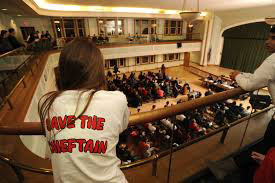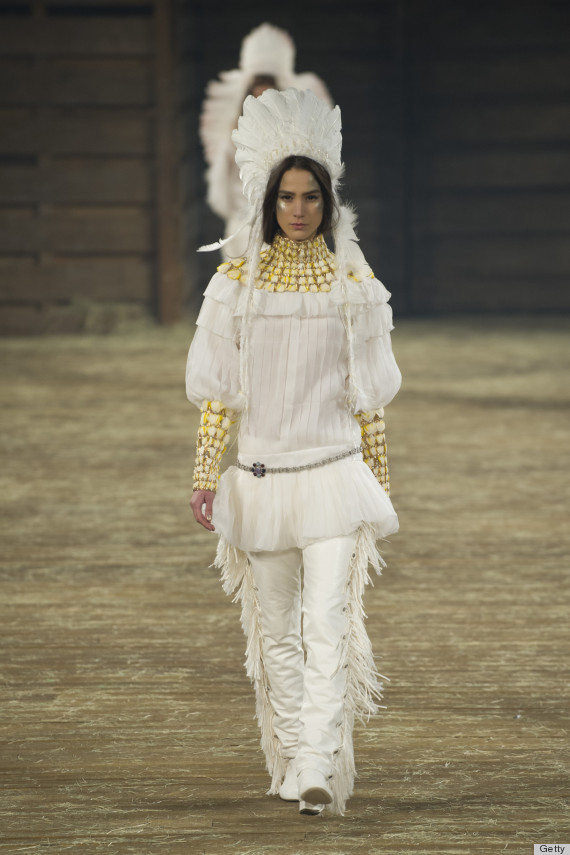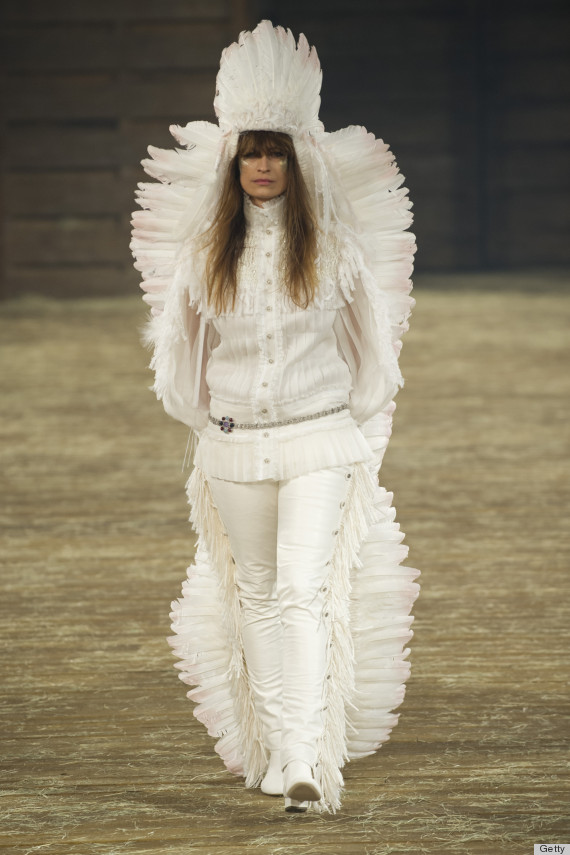By Suzanna Carlson, The Hartford Courant
 WEST HARTFORD — The high schools’ Warrior and Chieftain mascots were described alternately as proud and respectful or racist and offensive by speakers at a community forum on Thursday night.
WEST HARTFORD — The high schools’ Warrior and Chieftain mascots were described alternately as proud and respectful or racist and offensive by speakers at a community forum on Thursday night.
About 300 people attended the board of education forum, and about 50 spoke. No decision was made.
Dozens of students from Conard High School wore shirts emblazoned with “Save the Chieftain,” but students, teachers and parents from both Conard and Hall high schools expressed widely opposing views.
Those who support the mascots described them as symbols of pride and said they honored Native American culture. Many of the speakers pointed to the fact that leaders of the local Mohegan tribe, in consultation with students, have said they support the mascots’ use. Some cited a recent poll at Conard showing that 80 percent of students and 60 percent of teachers want to keep the symbol.
But others argued that the mascots are antiquated, racist caricatures that should be eliminated. Several said they have consulted with other Native American groups across the country who vehemently oppose the use of Native American imagery as sports mascots.
Quyen Truong said she attended Conard about 10 years ago and was asked to create the Conard Chieftain logo of a native man in a headdress.
“I genuinely thought at that time that I was honoring the Chieftains,” Truong said.
In college, Truong said, she met Native Americans for the first time and learned how historically marginalized cultures are denigrated by such imagery. She said she realized her work was “deeply offensive” to “a whole group of people that I didn’t really know and understand, and I became very conflicted about what I had done in high school. … My perspective has shifted and I really want to strongly advocate to retire the chieftain.”
Many of those opposed referred to decisions by groups such as the American Psychological Association, the National Education Association and the National Congress of American Indians to reject the use of Native American mascots and imagery, and urged the board of education to end up on “the right side of history.”
Arguing to keep the mascots, Tom Midney said the names are “meant to bestow pride, honor, and respect. … Don’t disrespect that tradition over such folly. That would be truly offensive.”
Parent Ted Mancini said he’s “sick and tired of listening” to what he described as a “PC witch hunt,” and said the majority’s opinion should dictate that the mascots remain intact.
The issue is not only the mascots, but the schools’ cheering sections, The Reservation and The Tribe, as well as the name of the Conard newspaper, “The Powwow.”
School Superintendent Tom Moore said the cost to change the schools’ logos would be around $50,000, and could total $100,000 if the logos and names were all changed.
“This has been both a challenging and invigorating process,” board of education Chairman Mark Overmyer-Velazquez said. “It’s not always been an easy one, it’s not always been entirely graceful … but it’s been a profound example of the democratic process that we have here and our students have learned a lot from it.”
The board of education is expected to meet soon to discuss the issue and decide whether the mascots should be changed.



